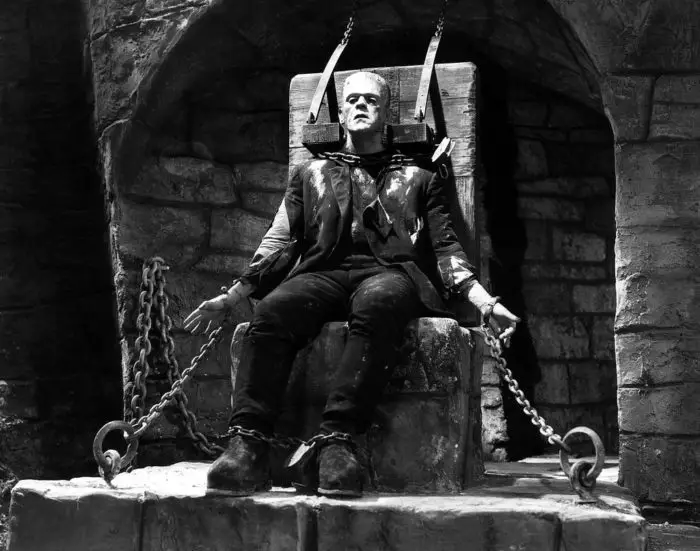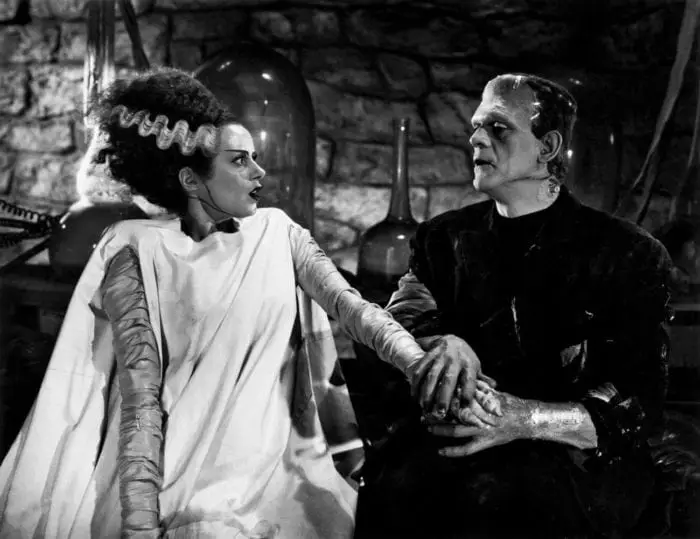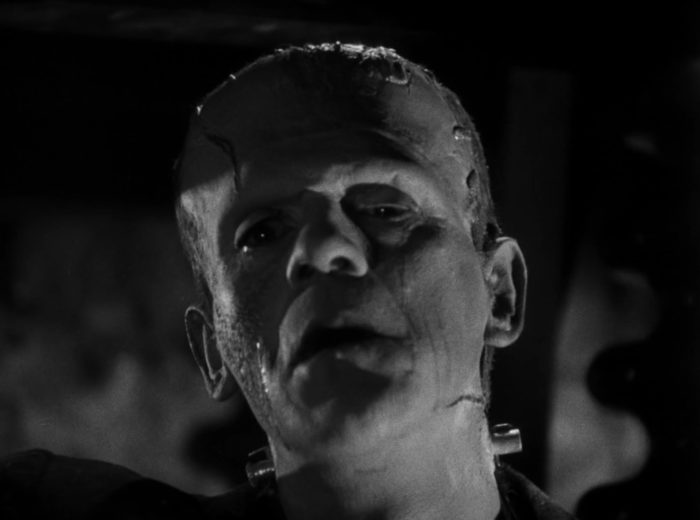When you think of the best horror sequels ever made, what comes to mind? Dawn of the Dead? Aliens? Evil Dead 2? Those are all common picks, but there’s one great horror sequel that doesn’t always get the love it deserves: Bride of Frankenstein. While it’s one of the most famous horror films ever made, it’s surprisingly underseen by modern audiences, and that’s a shame. Bride of Frankenstein isn’t just one of the best horror sequels of all time. It’s one of the best horror movies of all time. In fact, it’s one of the greatest movies ever made in any genre, and the key to its greatness lies in one simple theme.
In this film, Frankenstein’s creation is a monster only because people treat him like one. They judge him and attack him without ever giving him the chance to be good, so he’s one of the most tragic characters in horror history. It’s pretty heartbreaking to watch, and if you’ve ever been bullied, made fun of, or rejected just because you were different, this story will speak to you in a way few other genre movies can.
Setting the Stage

To see how this works, let’s start at the beginning. When Bride of Frankenstein opens, Frankenstein’s Monster is trapped in the ruins of a burning windmill, and after escaping, he goes to a nearby lake for a drink of water. While quenching his thirst there, he runs into a young woman tending some sheep, and upon seeing the creature, the woman’s first reaction is to scream in abject terror. In fact, she’s so scared she falls into the lake, but luckily for her, the Monster jumps in and saves her.
At this point, you might expect the woman to realize that the Monster isn’t so bad after all, but she actually does the exact opposite. When she sees him after coming to, she just starts screaming all over again, and this time, two men hear her cries and run to her aid. When they arrive, they see the Monster with her, and without asking any questions, they shoot him and then go back to town to stir up an angry mob. This mob in turn goes back out to the woods to find the Monster, and when they do, they capture him and lock him up in a dungeon.
This is one of the saddest scenes in monster movie history, and it shows just how bigoted these townspeople are. For starters, the Monster didn’t do anything to scare the woman in the first place. He didn’t threaten her in any way, so she had no reason to think he was going to hurt her. She just assumed he was evil, presumably because of his ugly looks and his bad reputation, so she didn’t even give him the chance to be good.
Then, when the Monster proved her wrong and actually saved her life, she still rejected him. She didn’t stop to think that maybe, just maybe, her initial impression of him might’ve been wrong. I can understand being scared by a hulking creature that was stitched together from corpses in a laboratory, especially when this creature already had a reputation for being a monster, but when he saved her, she should’ve realized that the stories about him were wrong. She should’ve realized that there was a lot more to him than his ugly exterior, but she didn’t. She just doubled down on her bigoted assumptions about the poor creature, so she became the first of many characters in Bride of Frankenstein to reject him despite his obviously good and peaceful nature.
And after that, the floodgates burst open. The two hunters who heard her screams pretty much did the exact same thing she did, and so did the townspeople that they whipped into a violent frenzy. Literally every single person in this scene just assumes that the Monster is in fact a monster, and nobody thinks to show him an ounce of compassion. Instead, they all reject him without even giving him the chance to be good. They ostracize him and bully him because he’s not like them, and we see that same pattern play out again and again throughout Bride of Frankenstein.
“We Belong Dead”

We don’t have space to go through the rest of the film and point out every time this pattern happens (this is an article, not a 1,000-page book), so let’s just jump ahead to the final scene and see how the story really hammers this point home and makes it impossible to miss. After Henry Frankenstein (in the original book he’s called Victor, but for some reason Universal changed his name to Henry) and his old professor Dr. Pretorius create the titular Bride, the Monster thinks he’s finally going to have a companion. He thinks that because she was made in a lab too, she won’t find him repulsive like everyone else in Bride of Frankenstein.
But he’s wrong. When she’s first unveiled, he approaches her and says, “Friend? Friend?” but she just screams and runs away from him. Then, after another failed attempt to befriend her, the Monster becomes utterly dejected, and he sadly proclaims, “She hate me. Like others.” He thinks his life isn’t worth living, so he decides to destroy himself, the lab, and everyone in it. He tells Henry and his wife to leave, but he commands Pretorius to stay, explaining, “We belong dead.” Finally, as a tear rolls down his cheek, he slowly pulls a lever that (for some unexplained but very convenient reason) blows up the entire building, and he puts an end to his lonely existence (until the sequel, of course).
Every time I watch this scene, my heart goes out to the Monster. After a lifetime of being rejected and ostracized simply because he was different, he thought he had finally found someone who would accept him, but she rebuffed him too. Like the human characters in Bride of Frankenstein, she didn’t even give him a chance. She literally took one look at him and ran away, and it was just too much for him. He couldn’t bear the loneliness and pain any longer, so he took his own life.
But for me, that’s not even the saddest thing about this scene. Rather, what really gets me is the line the Monster utters right before he pulls the lever: “We belong dead.” He was bullied and rejected so much that he began to see himself the same way everyone else did, and he came to believe that he didn’t deserve to be happy or find love of any kind. In short, he believed he had no place in this world, and to me, that’s the most heart-wrenching part of this entire story.
A Relatable Monster

See, there have been plenty of times in my life when I’ve felt exactly like the Monster does at the end of Bride of Frankenstein. I’ve been rejected and treated like an outcast by various people for everything from the way I dress to my favorite music to rumors that weren’t even true, so I’ve lost count of how many times I’ve felt like I have no place in this world.
And I know I’m not alone. Everybody struggles with these feelings at least a few times in their lives, and this is especially true for many horror fans. Horror is a misfit genre, so a lot of hardcore fans have felt the pain of rejection and loneliness in particularly acute ways.
So for us, Bride of Frankenstein isn’t just another fun monster movie. Rather, it’s a mirror that reflects our own experiences, and that’s what makes it such an enduring classic. Even after almost 90 years, the film still manages to perfectly capture this tragic element of the human condition, an element we horror fans often know a bit too well, and in my opinion, no other movie has ever done it better.



